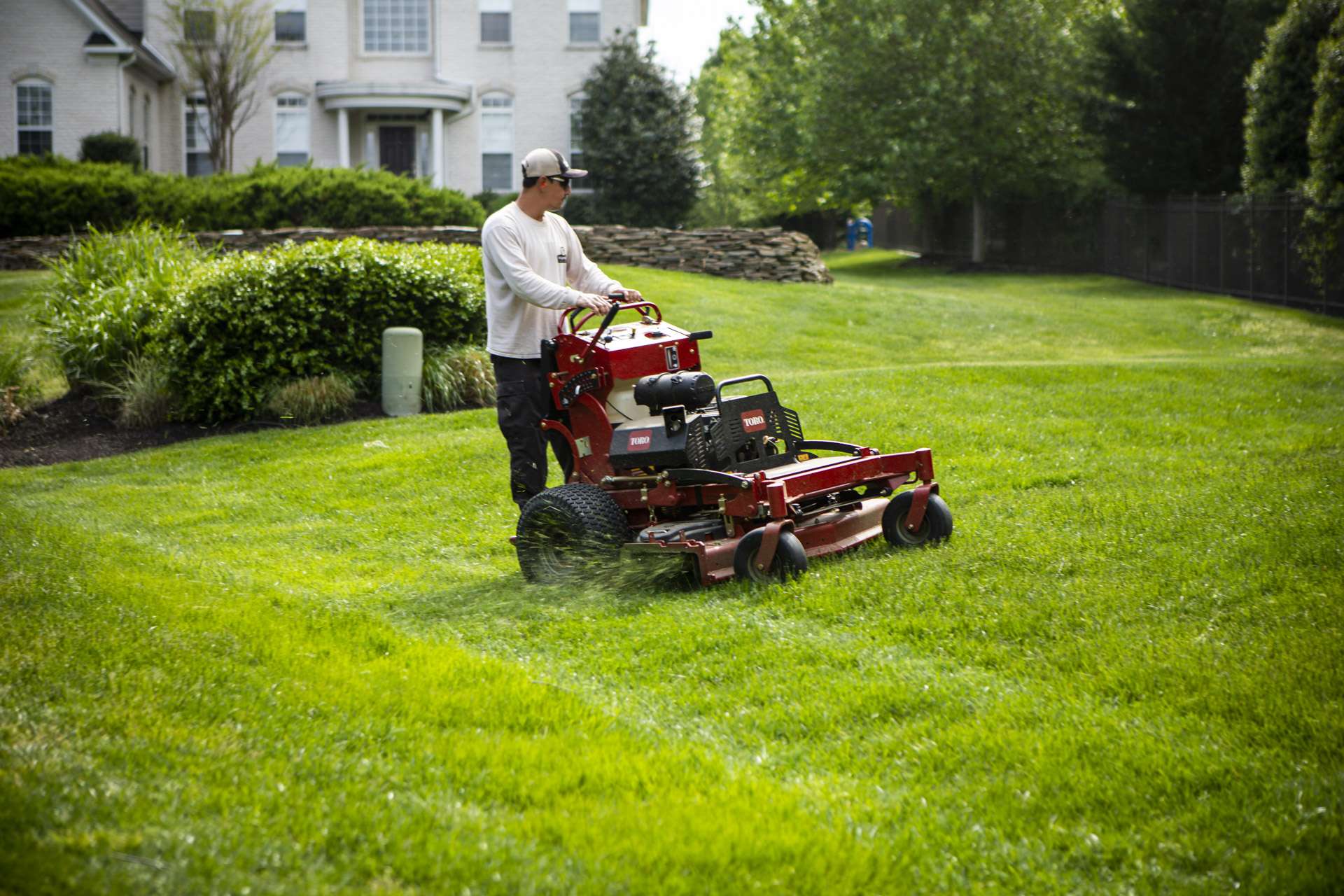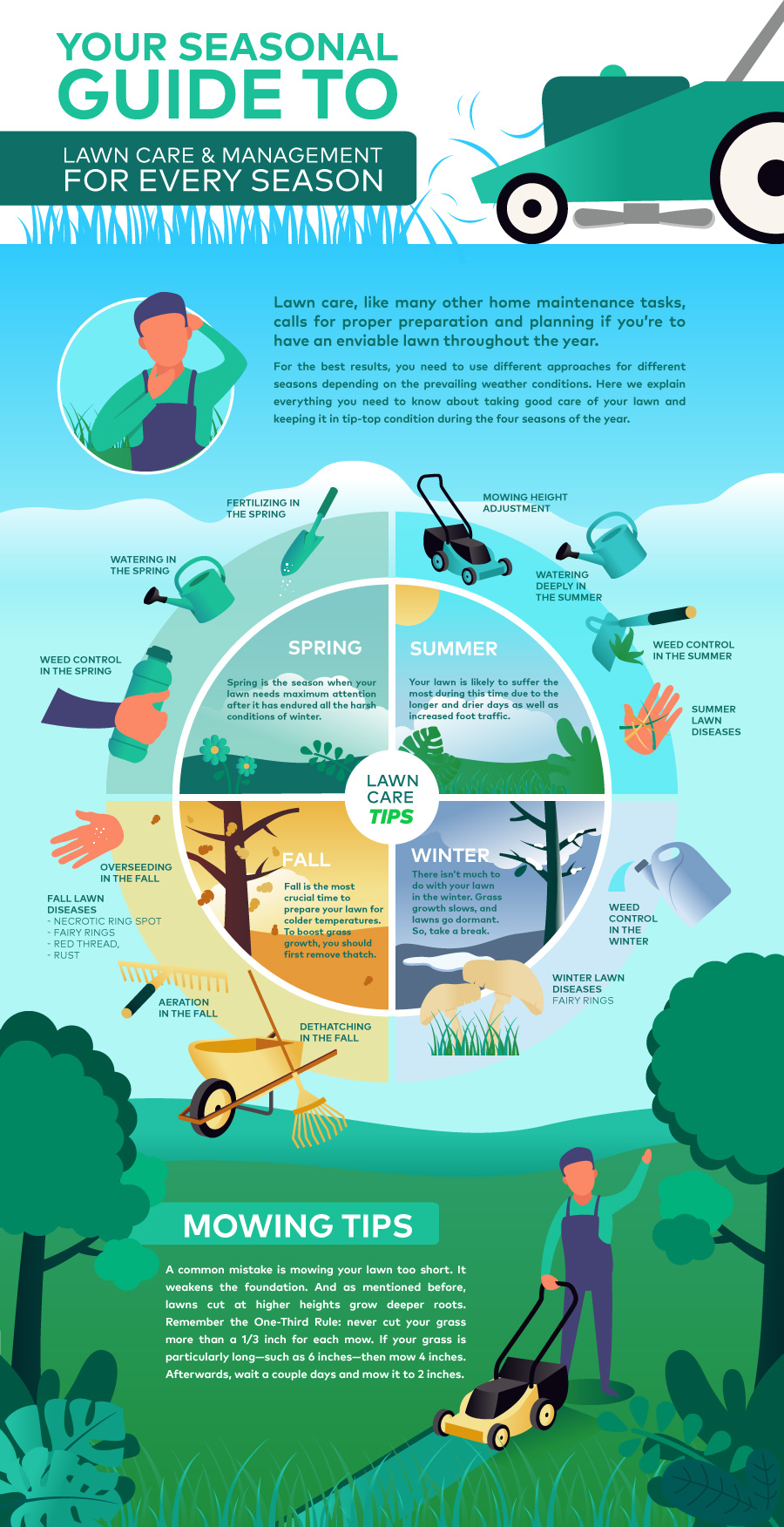Some Known Facts About Lawn Weed Control Utah County.
Wiki Article
Lawn Care Utah County Fundamentals Explained
Table of ContentsThe Greatest Guide To Lawn Care Provo UtahThe smart Trick of Lawn Fetilization Orem Utah That Nobody is DiscussingThe smart Trick of Lawn Weed Control Orem Utah That Nobody is Talking AboutThe Single Strategy To Use For Lawn Fetilization Orem Utah
50 lb per 1,000 sq feet per application to inclines. Preserve a buffer area of low-maintenance turfs or all-natural vegetation in between areas of highly maintained grass and water. Buffers produce a filter for unwanted nutrients as well as sediments. Iron can be used alone or in mix with nitrogen to boost turf shade.Slow-release nitrogen resources are less most likely to seep below the root zone than soluble sources in highly leachable dirts. When applying soluble nitrogen to sandy dirts with little natural matter and/or near shallow water tables, use nitrogen rates between 0.
50 lb per 1,000 sq ft per application to restrict seeping potential. Plant response to nitrogen is usually better when lower degrees are used a lot more frequently. Quick launch nitrogen sources ought to not be applied before a hefty rainfall or irrigation. Cold dirt temperature levels (lower than 55 levels Fahrenheit) slow-moving metabolic task of dirt microbes as well as decrease plant uptake of nitrogen.
Irrigating with 0. 25 to 0. 50 in. of water actions fertilizer from vegetation and into the dirt where it can be used by the plants. Irrigation decreases plant food loss through overflow and volatilization (vaporization), and also decreases the threat of foliar, or fallen leave burn. When possible, leave yard trimmings on the yard to disintegrate as well as reuse nutrients back right into the turf.
Some Known Details About Lawncare Orem Utah

Establishing the appropriate quantity of irrigation is important to the health of the turfgrass as well as the conservation of water high quality. Temperature level, wind, family member moisture, and also dirt moisture identify using water by the plant. Irrigate to change water lost via evapotranspiration, which is evaporation from land surfaces as well as plant leaves.
Over-irrigating increases vitamins and mineral seeping and also runoff possibility. Over-irrigating can additionally increase ecological stress and also insect pressure of turfgrasses. For additional information on irrigation and irrigation organizing, refer to Extension publication Water Demands of North Carolina Turfgrasses. An effectively made and also set up irrigation system will use an uniform YOURURL.com degree of water at the desired rate and time.
Water to simply below the existing root area to urge much deeper rooting. Much deeper watering does not profit the plant and also may seep pollutants right into the groundwater. In those situations where homeowners are liable for watering, the following BMPs will assist safeguard water quality. Water to a depth simply below the origin system.
The Only Guide to Weed Contrtol Orem Utah

Water in the very early morning to boost irrigation efficiency and also to lower disease possibility. Prevent midafternoon watering to lower irrigation loss from dissipation and the quantity of time when the turfgrass surface is wet. Do not be alarmed at brownish, withered leaves that arise from drought. These are normal signs of dormancy in cool-season yards.
Heavy traffic on a wet soil leads to soil compaction, which might then lead to drainage. Occasionally perform an irrigation audit to examine the irrigation system's about his distribution uniformity., provides great info regarding managing irrigation systems.
Thatch is a layer of partly decayed raw material over the dirt surface. This layer can be effective in capturing and damaging down pesticides. However, thatch 0. 5 in. in density can be harmful to a grass's health and wellness by producing a positive environment for turfgrass pests (insects and pathogens). Thatch can be decreased by vertical mowing, coring, as well as topdressing, which entails spreading a thin layer of product such as compost over the turf.
Lawn Weed Control Utah County Fundamentals Explained
See Table 2. Never ever remove even more than of the fallen leave surface area at one time. When long term rains make it difficult to mow frequently, increase the height of cut for the preliminary mowing and also slowly return sites to the proper height over numerous days to weeks. Do not cut when lawn is excessively wet to restrict the development of undesirable globs of clippings and soil compaction.Compost lawn cuttings if you can not leave them on the grass. Composted turf clippings, as well as other lawn waste, can be used as a dirt conditioner. Lawngrass Elevation after Mowing (inches) Bermudagrass 34 to 2 Zoysiagrass 34 to 2 Centipedegrass 1 to 2 Kentucky bluegrass, fine fescue, or perennial ryegrass 112 to 3 Tall fescue 212 to 312 An Integrated Bug Monitoring (IPM) program uses all available techniques to maintain pests at appropriate levels, while minimizing unfavorable results on people, the atmosphere, and the turf.
A lowered dependence on pesticides is a vital element in IPM programs and also the management of websites for water top quality. Know the grasses being expanded, the most likely bugs, and the problems that influence both.
Report this wiki page